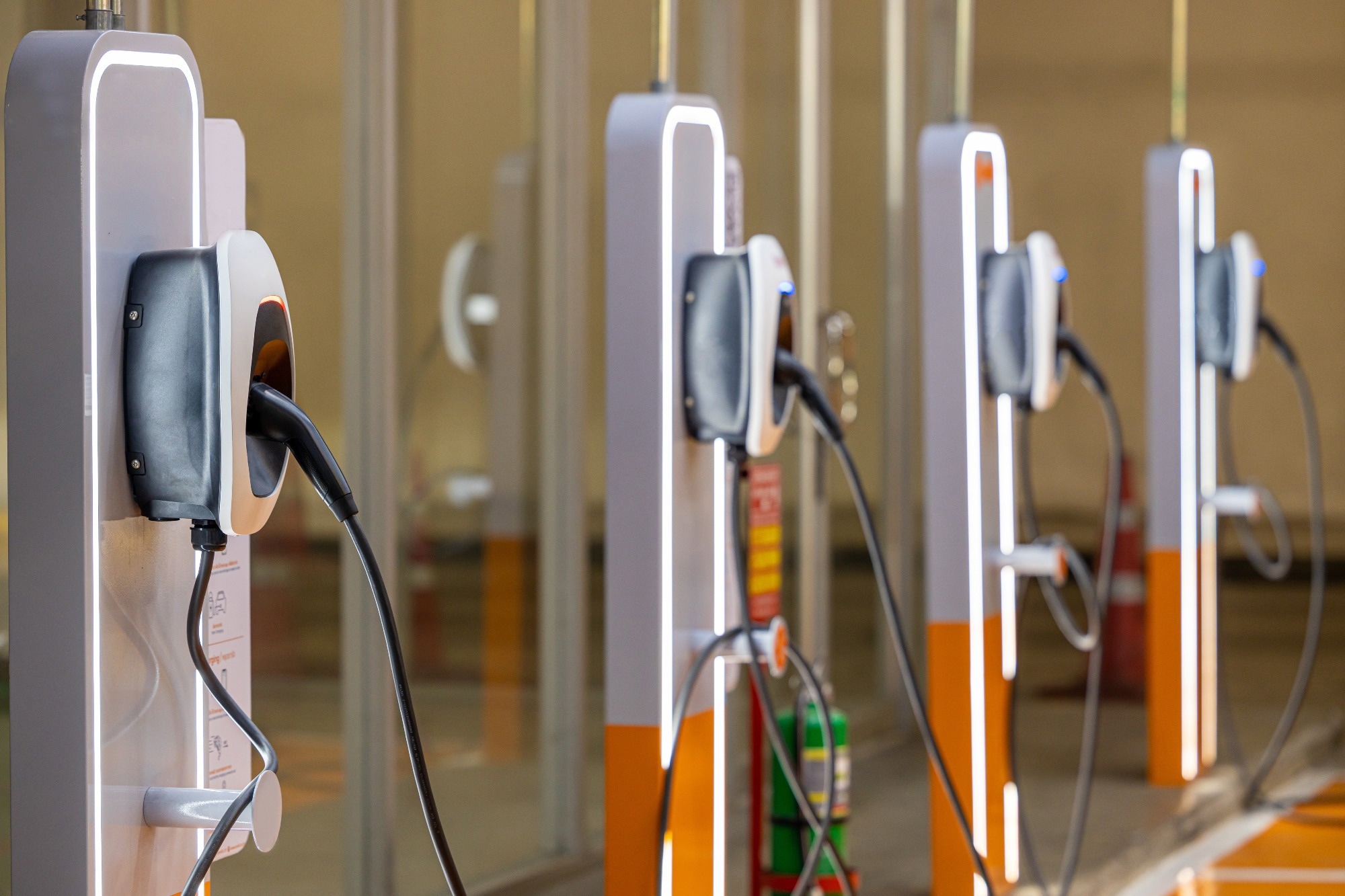In an article published in the journal Scientific Reports, researchers explored the advantages of predicting power consumption at electric vehicle charging stations (EVCS) to forecast income. They introduced a reliable time series model to accurately estimate EVCS power usage and predict firm income. The research employed various statistical techniques to analyze historical data patterns and revenue trends, enabling efficient resource management and optimization of operations.
 Study: Optimizing Electric Vehicle Charging Station Operations. Image credit: Darunrat Wongsuvan/Shutterstock
Study: Optimizing Electric Vehicle Charging Station Operations. Image credit: Darunrat Wongsuvan/Shutterstock
Background
The transition toward electric vehicles (EVs) represents a significant shift in the automotive industry offering the promise of zero emissions and addressing environmental and health concerns associated with traditional fuel-powered vehicles. As more individuals embrace EVs, the demand for efficient management of charging stations grows. Accurate power consumption forecasting becomes crucial for optimizing operations, preventing grid overload, minimizing power outages, and determining the necessary number of charging stations to meet demand.
EVCS plays a critical role in supporting the widespread adoption of EVs. However, operating and maintaining these stations require substantial energy resources, leading to significant costs. Previously, researchers have attempted to address this challenge through various methods, such as simple statistical models, machine learning algorithms, recurrent neural networks (RNN), long short-term memory (LSTM), transformers, and data-driven approaches. However, these methods were found to be insufficient or lacking in sophistication, highlighting the need for more robust forecasting techniques.
About the Research
In the present research paper, the authors focused on predicting electricity demand at charging stations using various time series techniques. These predictions were crucial for utility companies, charging networks, and infrastructure planners as they aid in effective resource allocation.
The study specifically investigated power consumption prediction for EVCS using three different time series models including auto-regressive moving average (ARMA), auto-regressive integrated moving average (ARIMA), and seasonal auto-regressive integrated moving average (SARIMA). ARMA models combine autoregressive (AR) and moving average (MA) components for time series forecasting, while ARIMA models extend this by incorporating differencing for trend and seasonality. SARIMA models further enhance this by accounting for seasonal patterns in the data.
The authors conducted an analysis by collecting charging activity data from public charging outlets in Colorado over four years. Additionally, they collected six months of charging data from ChargeMOD's charging station in Kerala, India. By analyzing this data, the study aimed to understand the patterns and trends in power consumption at these charging stations.
Furthermore, the researchers forecasted power usage based on different vehicle types, including four-wheelers, two-wheelers, and three-wheelers, to gain insights into the power consumption patterns specific to each type of vehicle. This analysis could be utilized to plan better and allocate resources to meet the demand effectively. Additionally, subscription data from the same source were utilized to anticipate income. This information is invaluable for companies as it allows them to formulate pricing strategies aimed at maximizing profits while maintaining competitiveness in the market.
The study evaluated each model's performance using various parameters, including root mean squared error (RMSE), mean absolute error (MAE), and mean absolute percentage error (MAPE) scores. The RMSE was utilized to calculate the average difference between predicted and actual values, considering the square of differences. Additionally, they employed MAE to compute the average absolute difference between predicted and actual values, indicating the average magnitude of errors.
Moreover, they used MAPE to measure the percentage difference between predicted and actual values, offering a relative accuracy measure. Lower RMSE, MAE, and MAPE scores signify better model performance in accurately forecasting future values, making these metrics crucial for model assessment.
Research Findings
The outcomes showed that the SARIMA outperformed both the ARMA and ARIMA models in forecasting power demand and revenue. The SARIMA model exhibited the least RMSE, MAE, and MAPE scores compared to the other models. Furthermore, the authors highlighted that four-wheeler consumed more power compared to two and three-wheelers. This suggested that the power demand from four-wheelers was higher than that from two and three-wheelers. This information could help utility companies and charging networks understand the varying power consumption patterns based on different types of vehicles.
Additionally, the study mentioned that direct current (DC) charging facilities exhibited higher electricity usage compared to alternating current (AC) charging stations. This indicated that DC charging stations consume more electricity compared to AC charging stations. The higher electricity usage at DC charging facilities could be attributed to the faster charging capabilities of DC chargers.
Conclusion
In summary, the paper comprehensively highlighted the importance of accurate electricity demand prediction at charging stations. The SARIMA-based approach could provide valuable insights into power consumption. It could assist utility companies, charging networks, and infrastructure planners optimize their operations, including power scheduling and estimating energy requirements for charging stations, and make informed decisions about resource allocation and pricing strategies. Moreover, it could enhance the user experience for EVCS consumers and contribute to the effective planning and design of EV charging infrastructure.
The researchers acknowledged limitations and challenges, including sample size constraints, data collection limitations, factors specific to charging stations, seasonal variations, vehicle diversity, and potential biases in the methodology. These factors may impact the generalizability and reliability of the study outcomes. Additionally, they suggested future directions, such as improving the data collection process, refining models by integrating time series approaches with various machine learning techniques, incorporating dynamic pricing strategies, and integrating insights from user behavior.